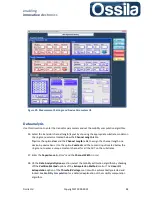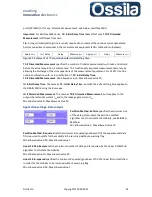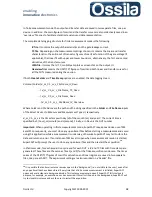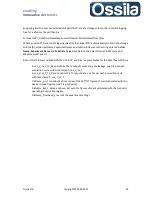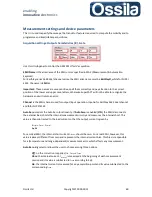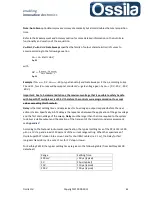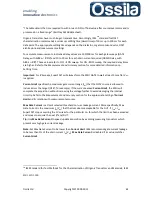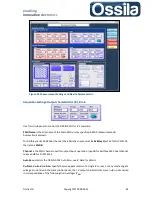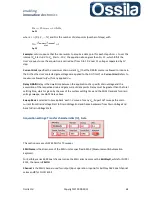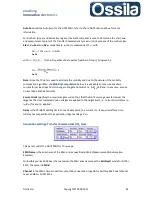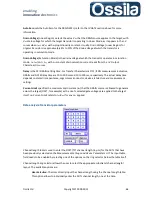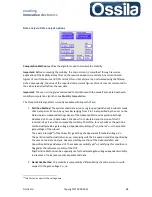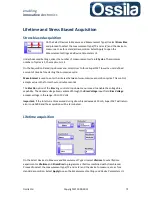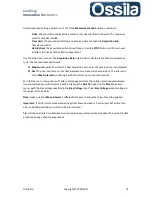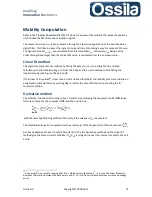
enabling
innovative
electronics
Ossila Ltd
Copyright © 2009-2015
61
Note:
Auto Zero
option
On
improves accuracy dramatically but almost doubles the total acquisition
time.
Refer to the
Measurement and Accuracy
section for more detailed information on the Auto Zero
functionality and duration of the acquisition.
V
GS
Start
,
V
GS
End
and
Gate Sweeps
specifies the family of output characteristics (IV) curves to
acquire according to the following equation,
V
GS
,
i
=
V
GS
Start
+
n
Δ
V
,
Eq. 22
with
Eq. 23
Example
If V
GS Start
= 0 V,
V
GS End
= -60 (p-type transistor) and Gate Sweeps = 4 then, according to Eqs.
22 and 23, four IV curves will be swept at constant
V
GS
,
i
gate voltage given by
V
GS,i
= (0 V, -20 V, -40 V,
-60 V).
Important:
Due to hardware limitations, the maximum voltage that is possible to safely handle
with SuperFACT multiplexer is ±100 V, therefore the controls were programmed not to accept
values exceeding this threshold.
Delay
is the total settling time and determines for how long an output is applied before the next
action is taken. Specifically, GATE delay is the lapse time between the application of the gate voltage
and the first drain voltage of the sweep.
Delay
must be larger than the time required to the system
to deliver a stable output and the duration of the transient of the transistor under measurement,
see
Appendix V
.
According to the National Instruments specification, the typical settling time of the PXI-4132 is 300
µS on a 1 V step and a load of 50 percent of the current range setting. When the capacitance of
Ossila SuperFACT is taken into account, and for short BNC cables (i.e.≤ 1 m), the Delay for fast
inorganic
transistor can be set at 1 ms for 1 V step or lower.
For Keithley 2612B, the typical settling time are given in the following table (from Keithley 2612B
datasheet)
Range
Settling Time
200 mV
<50 μs (typical)
2 V
50 μs (typical)
20 V
110 μs (typical)
200 V
700 μs (typical)


